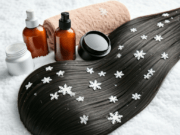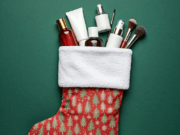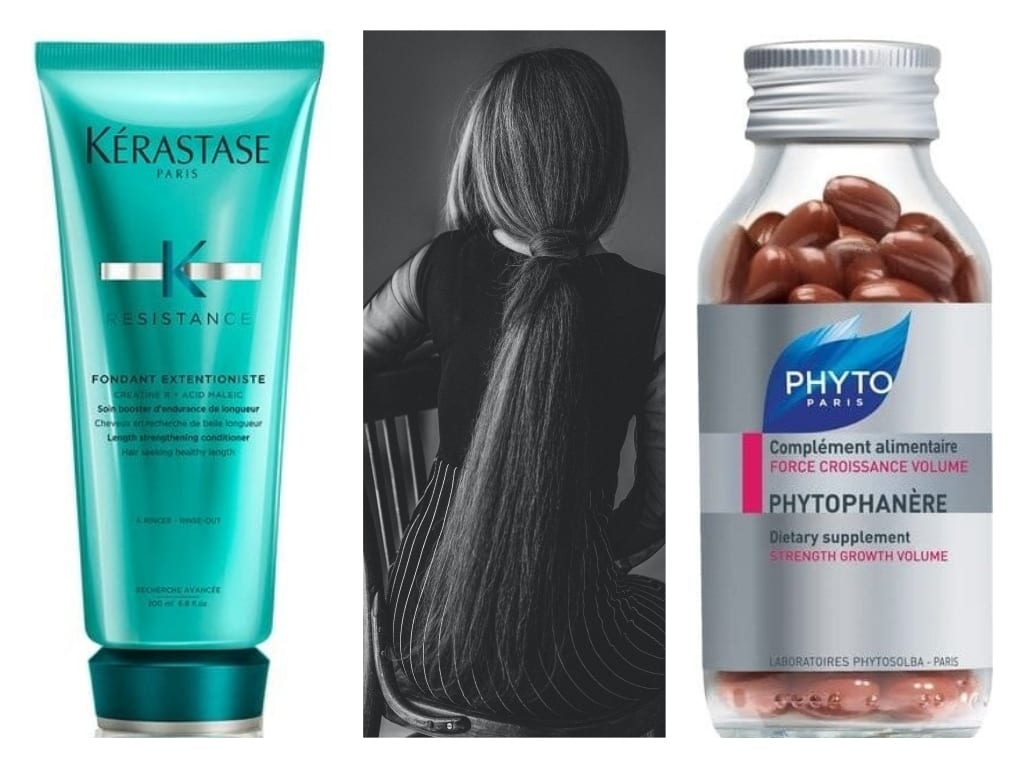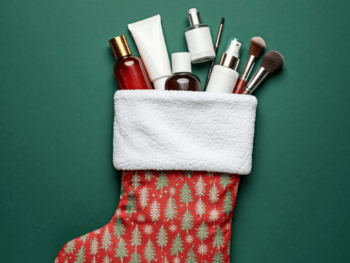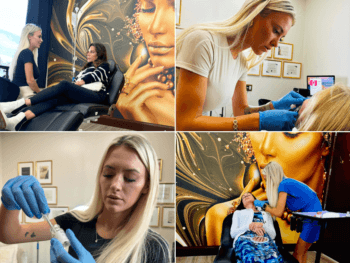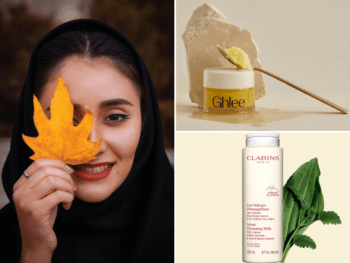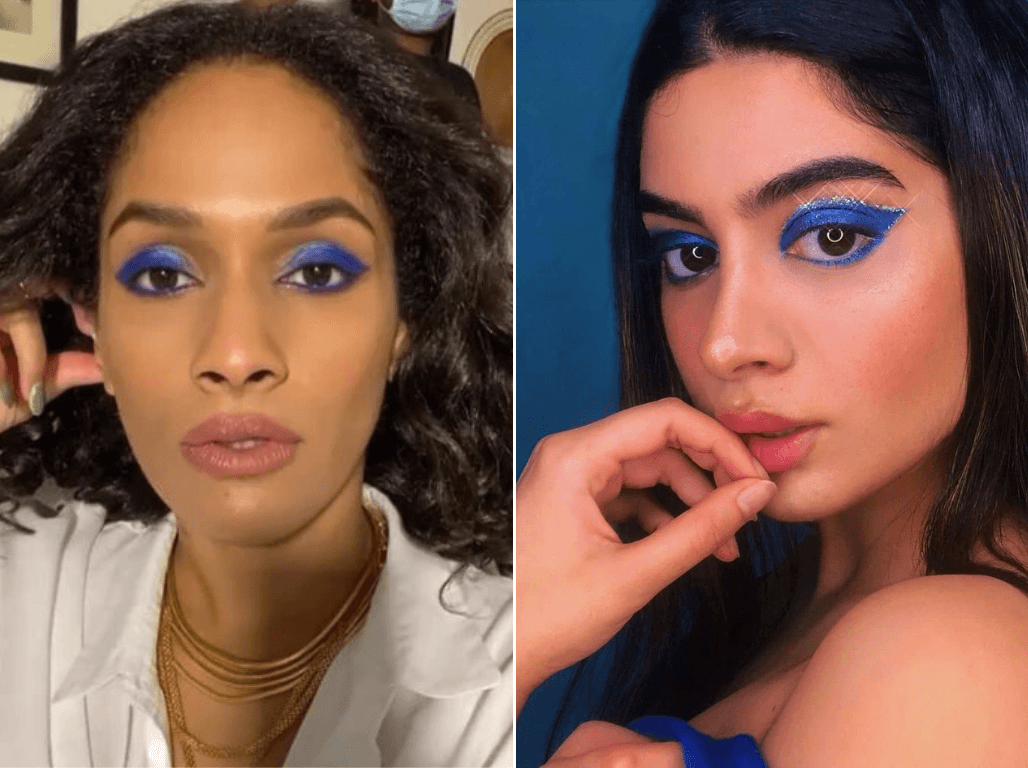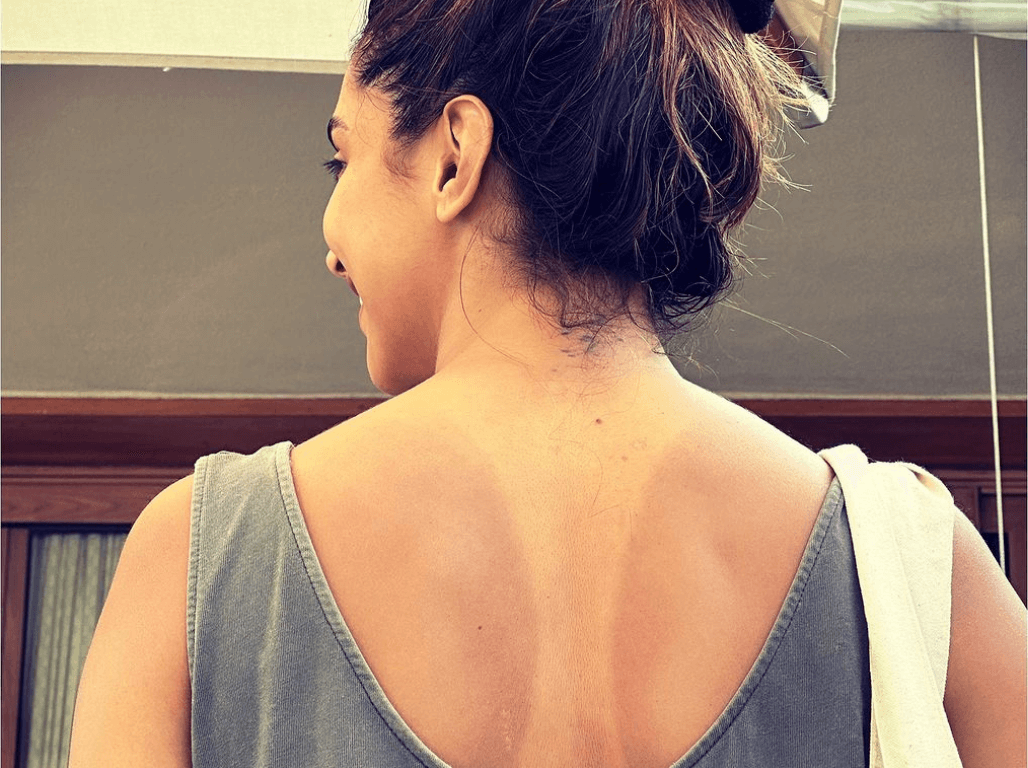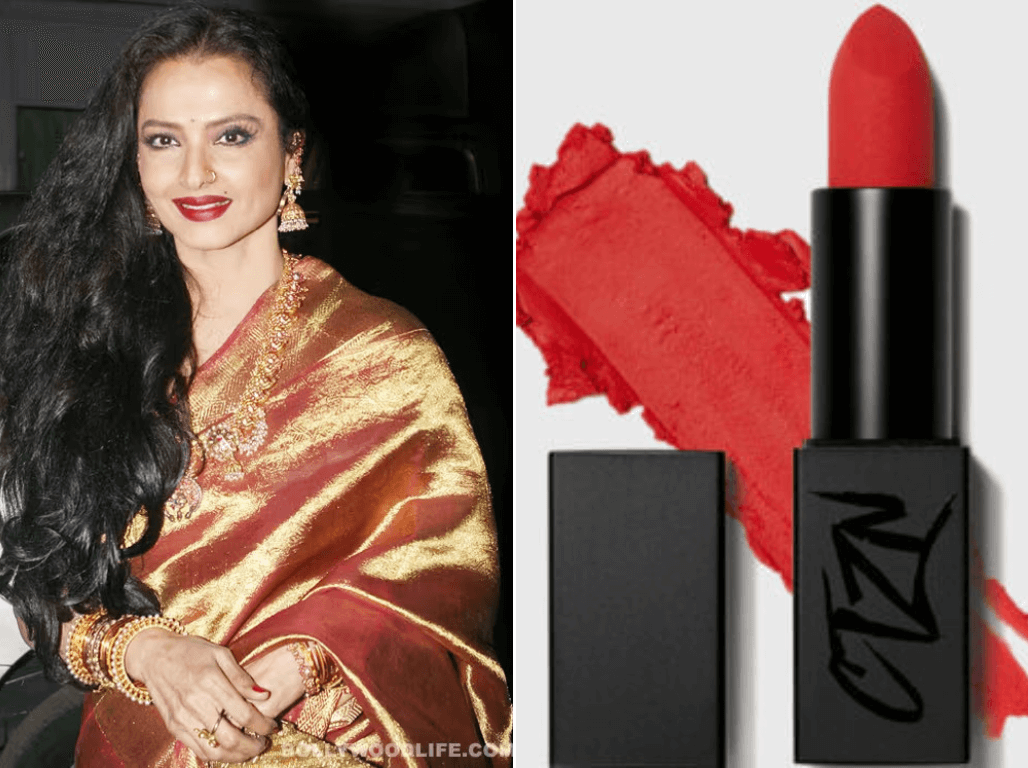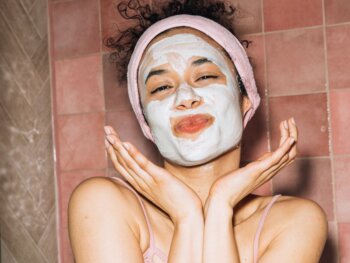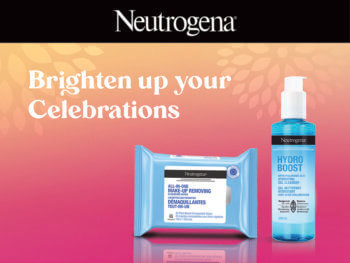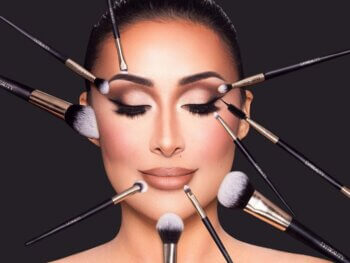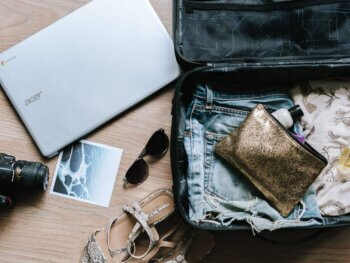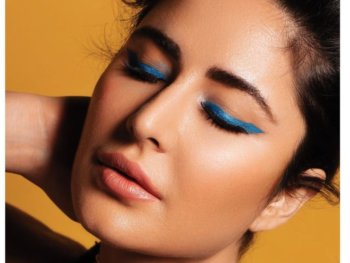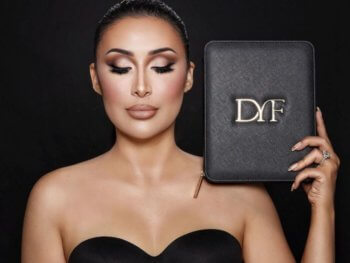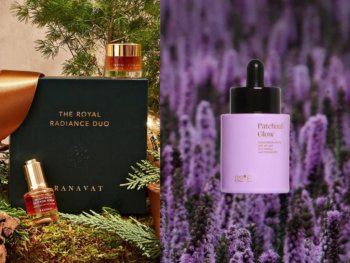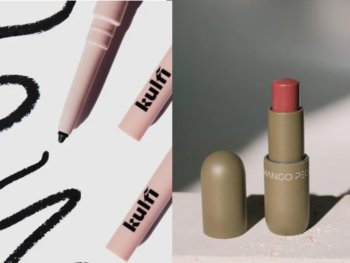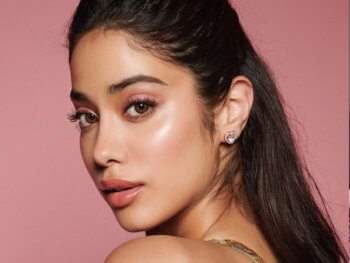Whether it’s stress-induced, or post-pregnancy hormones, hair-loss is an all too common issue with women. Here are some tips on how to manage your hair loss internally and externally.
Headlines in beauty media are rife with reports of increased hair loss among women since the onset of the pandemic. I was concerned because I noticed more hair in the shower drain … but was I losing hair? Was it merely excessive shedding? What is the difference between the two? Did I have any way of dealing with the situation when I had no access to a dermatologist? Read on to find out …
My metabolism, skin, and facial features were always sources of angst as a teenager but my hair, never. Like many South Asian women, I was born with a mane that was often the main attraction, because it was dark, thick and shiny. As I grew older, I understood that hair tends to thin because hair follicles die, hairs grow out thinner, and hormones affect production, so I gladly adjusted my care routine to minimize these issues; Father Time would never rob me of my crown. All was going well until mid-March 2020 when the pandemic hit, and my father was seriously ill. I started to notice issues with my hair— as in there was more on the floor, in the shower drain and entangled in my hair brush.
SHEDDING VERSUS LOSS, SPLITTING HAIRS?
Initially, I thought that my hair was shedding and that it was par for the course for spring’s arrival but when it continued into May, I knew that I was experiencing an increased level of same. Typically, I lost about 20 hairs when I brushed my hair each morning, and a tiny clump each time I washed it, which was twice weekly. Over the spring and summer months, my mother observed my hair on the kitchen floor, which had never previously happened, and I noticed that each time I washed my hair that I lost the equivalent of two clumps. The clumps were composed of full and broken strands of hair.
By the time June arrived, I was gripped with a sense of panic that can only be triggered by vanity and pride. I was fearful that I was slowly losing my crowning glory and what was once a source of joy was devolving into an albatross. I visited my hairdresser who inspected my scalp and confirmed that I did not have any bald spots or irritations, and no areas which were thinning out. His inspection reassured me because according to the Mayo Clinic, “Hair loss occurs when new hair doesn’t replace the hair that has fallen out.”
After my hairdresser’s appointment I realized that it was silly to blindly accept the screaming headlines about COVID-19 stress-induced hair loss. The Mayo Clinic explained that stress can cause hair to fall — but since my scalp did not have any bald spots I eliminated the issue of hair loss from my concerns but understood that stress is a big factor in my life and that could trigger shedding. After further research, I chanced upon article about hair shedding, and it explained that it was normal to lose between 50-100 hairs daily.
I then decided to put on my thinking cap. I knew that it would be virtually impossible to access a dermatologist to assess whether there was any medical issue related to my increased hair shedding, but what could I do to minimize my hair from shedding, falling or breaking? The answer: adjust my hair care approach in a cautious and judicious manner until the COVID-19 restrictions are lifted and then I can visit a dermatologist if necessary.
VITAL VITAMINS
Great hair starts from within, and I immediately added 2 capsules of Phyto Paris Phytophanère as part of my breakfast routine, because this hair vitamin contains borage oil which is composed of omega-6 fatty acids that positively influences hair growth.
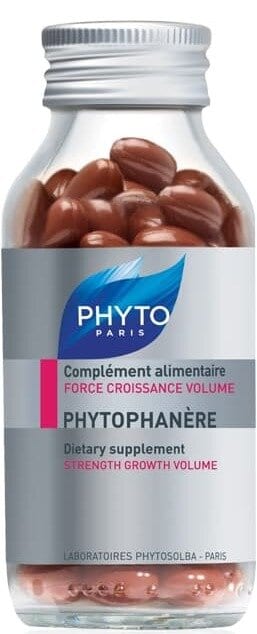
I noticed increased hair volume in about 6-8 weeks after I started to take them and it is now part of my hair care arsenal. I stop taking the vitamins after 3-4 months; take a break for a month or two; and then restart again. I suggest that if you have never taken vitamins that you should discuss it with your pharmacist or your health professional.
THE POWER OF MASSAGE
I also started to integrate Ayurvedic massage techniques because the initial phase of hair growth, anagen, is the active phase during which www.healthline.com, explains as “your hair follicles are pushing out hairs that will continue to grow until they’re cut or until they reach the end of their lifespan and fall out.” It continues to state that “at any time, about 90 percent of the hairs on your head are in the anagen phase.”
To enhance the phase, I wanted to encourage more blood flow to the scalp by adding the technique to my approach. I am not a fan of applying hair oil twice a week, so instead thanks to Ayurveda for Dummies, applied these massage techniques when I shampoo.
Massaging hair in the shower:
- Covered my fingertips with shampoo.
- Finger-comb the shampoo into my hair, touching all part of the scalp.
- Drop my head forward.
- Part my hair on the back of my head and massage the shampoo in that area.
- Use picking strokes, where I lifted little tufts of hair, and spread the shampoo with each gentle pick.
- Gently grasp hair in little clumps and twist in a clockwise direction (Don’t apply any pressure when you twist because wet hair is prone to breakage).
- Gently tap the scalp with dancing fingertips, making sure to work the shampoo into a lather.
- Continue the tapping while I rinse out the shampoo.
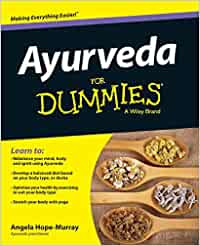
Honestly, I can’t tell you if the massage directly stimulated hair growth but what I can say is that my hair certainly had more spring and vivacity once it was dry. I also felt relaxed after my shampoo sessions because they were a time when I reduced my stress level through the power of touch. Further, the gentle nature of the massage prevented me from accidentally ripping hair from the roots and that most certainly contributed to reducing my hair clump losses from two to one. (Also, when you go back to your salon pay attention to how your hair is washed. You’ll notice that the person is also using some massage techniques as well which is why it feels so good.)
KEY PRODUCTS
Aside from enhanced nutrition and massage technique, I also tweaked my shampoo and conditioning products. My hair tends to be dry, so I focus on formulations that add moisture to the hair. I decided to try anti-snap, anti-breakage formulations that preserved hair length, and even looked at products that are designed to treat damaged hair because they are gentle and plump up strands. I tested the Kérastase Resistance line of products, and I made three excellent discoveries:
- After wetting my hair, I applied the Kérastase Soin Premier Thérapiste Fibra-Kap™ Sève de Résurrection which is designed for damaged, fine hair. Previously, I would have dismissed this product because my hair is coarse and thick but I was shedding my mane, and I had think out of the box. The product contains 6 amino acids, which attach to damaged areas of the hair to compensate for the loss of mass, and since hair is composed of protein, I figured that it would be a good fit. I admit that I rolled my eyes when I read on the tube, “To be applied BEFORE SHAMPOOING to protect the hair fibre during shampooing without weighing hair down.” I followed the directions and then followed with shampoo.
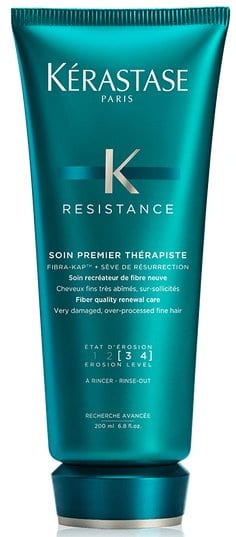
2. I then used a nickel-sized dollop of Kérastase Resistance Bain Extentioniste Length Strengthening Shampoo, and employed the massage technique that I talked about above. This shampoo contains creatine and taurine, two amino acids that strengthen the strands internally and externally, respectively, and ceramides which soften hair. I liked the lather; it was not excessively bubbly and washed out without unnecessarily tugging at my hair, which weakens strands.
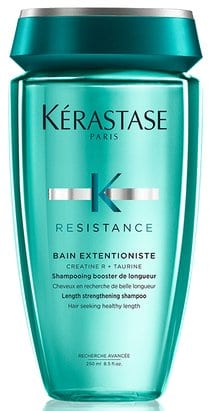
3. Next was the Kérastase Resistance Fondant Extentioniste Creatine R + Acid Maleic Length Strengthening Conditioner, which continued adding creatine and ceramide to my hair, and maleic acid which seals the cuticle with a uniform coating.
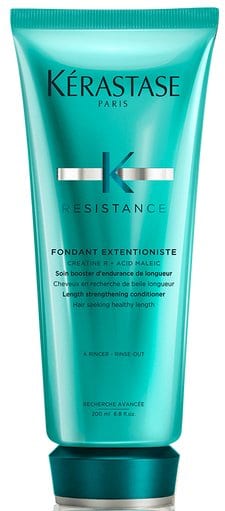
I had already started to see lesser hairs shed with the addition of vitamins but the Resistance trio left me speechless. Within two weeks of usage, my hair clumps went from two solid clumps, to a clump a bit, and now I lose one clump, which was my pre-pandemic hair shed rate. I wholeheartedly take back my eye roll for the Soin Premier Thérapiste Fibra-Kap™ Sève de Résurrection because when I rinsed it out, only a few hairs shed, where before I used to lose more hair after an initial rinsing. I also used this product with other shampoo and conditioner duos, and my hair shed less throughout the cleaning process.
For women who have processed hair which has become more brittle due to indoor heating, I suggest trying Nexxus Keraphix™ Treatment Masque. It contains helpful ingredients such as glycerin and collagen amino acids which are humectants, so the hair attracts moisture; and hydrolyzed keratin, which is broken down proteins that are easily deposited into the hair shaft, making it less porous.
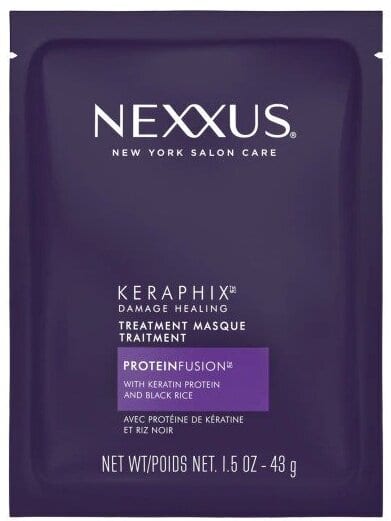
ACCESSORIES TO KEEP IN MIND:
Hair Ties:
When I wrote Key Tips On How To Do The Most Brilliant Blow Dry At Home, I recommended using hair accessories such as the Invisibobble because, “it does not have any metal piece that will scratch the hair. The plastic slides gently against the hair and is easily removed without the need to yank which stresses the roots.” I stand by that recommendation. The less you snag and pull at your hair, you reduce the likelihood of breaking strands or outright pulling out hair.
Silk Pillowcases:
I extend that concept of accessories to adjusting your sleep routine. If you are in position to transform your mother’s plain silk saris into pillowcases. Just do it. Silk will not tug at your hair and allows the strands to roll in peace as you sleep. Please note that my mother has outright refused to transform any of her saris into pillowcases, but I will still campaign because why buy a silk pillowcase when there is a trunkful of saris that are not being worn. 😉
BRUSHING — A DELICATE EXERCISE
Hair brushing is an integral part of hair care and a potential source of hair shedding if you yank and pull throughout the process. I recommend brushing the hair when it is between 90% to 100% dry because when the hair is sopping wet it is prone to breakage. I like to casually separate my hair into quarter sections and then brush from root to tip a few times, making sure to lift the section and brush underside. Contrary to the popular myth, there is absolutely no need to brush your hair 100 times. If your hair is detangled and smooth after five strokes it just doesn’t make sense to touch the hair 95 more times. And who has that time anyhow? Remember each time you touch your hair you create an opportunity to damage it which can lead to increased shedding, falling and breakage.
HAIR IS MY CONCLUSION
After several months of adjusting my diet and hair routine, with the Kérastase trio being the lynchpin to my success, I am shedding less hair. My hair looks buoyant and I am no longer nervous about washing it because I detested losing two clumps of hair. I understand that I must cede some ground to Father Time but I am still victorious because my mane is still a shiny, thick crown.
Main Image Photo Credit: www.phyto-canada.ca, www.www.kerastase.ca, Shahin Khalaji/Unsplash.com
Meena Khan | Features Editor - Beauty
Author
Meena (@meenalaregina) always loved the idea of exploring the non-conventional idea of beauty. Having grown up as a pimply chubby teenager, she wanted to see the change in the world that best reflected your uniqueness as well. Her well-received collection of blogs where she tries on various beauty p...
















